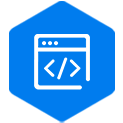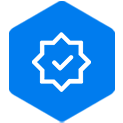
2023-04-18
I've been chatting with many business owners lately, and everyone is thinking about digital transformation. One boss asked me, "For our small company, is building an independent website really useful?" It's a good question. Today, let's talk about which types of businesses are suitable for having an independent website. First, my opinion. An independent website isn't a one-size-fits-all solution, but for many businesses, it's definitely a golden key to opening up new markets and enhancing competitiveness. Over the years, I've seen many success stories and also encountered some pitfalls. I've summed up a rule: as long as you have unique products or services, want to directly reach customers, and build a brand, an independent website is worth considering. Which businesses are using independent websites? Cross-border e-commerce enterprises are loyal fans of independent websites. For example, some merchants exporting clothing and 3C products used to sell on large platforms like Amazon. The competition is fierce, platform rules keep changing, and stores are often banned or fined. A cross-border e-commerce client selling outdoor clothing was doing well on a platform, but suddenly the platform changed its search ranking rules. As a result, traffic dropped by more than half, and sales plummeted. After serious reflection, he decided to build an independent website to take control of his own destiny. With an independent website, he not only got rid of the pressure of platform commissions but also managed to attract customers to his own site through SEO optimization and social media promotion. Gradually, he built up his customer base, and the repurchase rate kept rising. Brand-oriented enterprises are also well-suited for independent websites. They want to strengthen their brand image and increase brand premium. Take Apple, for example. Its official website is an excellent independent website. With a concise and elegant design, detailed product introductions, and various brand stories and service displays, consumers can feel Apple's brand charm as soon as they enter the website, which greatly enhances their trust in the products. Through independent websites, brand-oriented enterprises can directly communicate with consumers, collect feedback, and continuously optimize their brands and products. Additionally, enterprises with unique products or services find independent websites tailor-made for them. Companies offering high-end customized services or niche specialty products can fully showcase the uniqueness and advantages of their products on independent websites to attract precise target customers. There was a handmade leather goods enterprise with unique designs and exquisite craftsmanship, but it struggled to stand out on comprehensive e-commerce platforms. After building an independent website, they displayed in detail the production process, material characteristics, and personalized customization services of their leather goods, attracting a large number of customers interested in handmade leather goods, and their business thrived. Since independent websites are so important for these enterprises, what powerful functions do they have? Let me elaborate. The product display function is the foundation of an independent website and the first step to attracting customers. Enterprises can present their products comprehensively to customers through high-definition images, detailed parameters, 360-degree panoramic displays, etc. For example, furniture enterprises use 3D modeling technology on their independent websites to show the appearance, structure, and details of furniture. Customers can also view the matching effects of furniture in various home scenarios from different angles through mobile phones, computers, and other devices, creating an immersive experience that greatly improves customers' understanding of the products and their desire to buy. The payment and settlement function is crucial to the success of transactions. Nowadays, independent websites support multiple payment methods, including common ones like credit cards, PayPal, and Alipay International, and even some emerging digital currency payments. This way, no matter which country customers are from or what payment method they are used to, they can successfully complete payments on the independent website. For instance, cross-border e-commerce clients focus on connecting with credit card payments such as Visa and MasterCard for customers in European and American markets; for the Southeast Asian market, they integrate popular local e-wallet payment methods, which greatly improves the payment success rate and customers' shopping experience. The logistics tracking function is also essential. After customers place an order, they are most concerned about when the goods will arrive. Independent websites are connected with major logistics service providers. Customers only need to enter the waybill number on the order details page to track the real-time transportation trajectory of the goods, with every link from shipment, transit to delivery clearly visible. This not only reassures customers but also facilitates enterprises to keep track of logistics information and take preventive measures for possible logistics issues in advance. The customer management function is a good helper for enterprises to maintain customer relationships. Independent websites can record customers' basic information, purchase history, browsing preferences, and other data. Based on these data, enterprises can manage customers in categories and provide personalized services and marketing for different types of customers. For example, for regular old customers, enterprises can regularly push exclusive offers and new product information to improve customer loyalty and repurchase rate; for new customers, they can send welcome emails, introduce product advantages and usage methods, and guide them to make their first purchase. The marketing and promotion function is the key for independent websites to obtain traffic and increase sales. Independent websites have rich marketing tools. SEO optimization can help the website get better rankings in search engines and attract more natural traffic; social media marketing can interact with customers through social platforms like Facebook and Instagram to promote brands and products; email marketing can regularly send personalized emails to customers, including new product recommendations and promotional activities, to accurately reach target customers. In addition, there are marketing methods such as membership systems, coupons, and limited-time discounts to stimulate customers' purchasing desire. Every enterprise is unique, so independent websites should certainly be customized. Enterprises in different industries and of different sizes have different needs for the functions of independent websites and different design priorities. First, for e-commerce enterprises, in addition to the basic functions mentioned earlier, they pay special attention to product search and filtering functions. Imagine an e-commerce independent website with tens of thousands of products. Without efficient search and filtering functions, it would be as difficult for customers to find their favorite products as finding a needle in a haystack. Therefore, e-commerce independent websites provide multiple search and filtering methods by category, price, brand, keyword, etc., allowing customers to quickly locate target products. For example, a maternal and infant e-commerce client has set filtering conditions such as age group, product type, and brand on its independent website. Mothers can easily filter out suitable milk powder, diapers, toys, and other products according to their babies' ages, greatly improving shopping efficiency. For independent websites of educational and training institutions, online course display and learning management functions are key. Institutions can display detailed information such as course outlines, teacher introductions, and student evaluations to attract students to enroll. At the same time, through the learning management system, students can check course progress, watch teaching videos, submit assignments, take exams, etc., at any time, realizing the whole-process management of online learning. For example, some online English training institutions provide rich course resources on their independent websites, including English courses of different levels and themes. Students can also arrange their study plans independently according to their own time and learning progress, which is very convenient. Independent websites of service-oriented enterprises emphasize service display and appointment functions more. For example, beauty salons, psychological counseling institutions, etc., display information such as service items, service processes, and service teams on their independent websites to let customers understand the service content and characteristics. Customers can also use the online appointment system to choose service time and service personnel and arrange their schedules in advance. A beauty salon client saw a significant increase in customer appointments after launching the online appointment function on its independent website, which not only improved customer satisfaction but also facilitated the store's operation and management. After talking so much, you must be curious about how an independent website is built from scratch. Let me tell you about the entire process of independent website development. Preliminary planning is the first and most important step in independent website development. At this stage, we need to communicate in-depth with the enterprise to understand their business goals, brand positioning, target customer groups, and other information, and then formulate a detailed website construction plan based on this information. For example, for a cross-border e-commerce independent website focusing on fashionable women's clothing, we need to analyze the age, gender, geographical distribution, consumption habits, fashion preferences, etc., of the target customers, and determine the overall style, functional modules, and content structure of the website based on this. Next is the design stage. Designers will design the website's prototypes and renderings according to the preliminary planning, including the layout and style of each page such as the homepage, product page, detail page, shopping cart, and payment page. In the design process, we will fully consider the user experience to ensure that the website interface is concise and beautiful, the operation is convenient and smooth, and at the same time, highlight the brand characteristics and product advantages. Just like the fashionable women's clothing independent website mentioned earlier, designers will use fashionable and trendy color matching and layout styles to display the fashionable styles and matching effects of women's clothing, attracting the attention of target customers. The development stage is the process of transforming the design drawings into an actual website. The development team will carry out front-end and back-end development work using professional development languages and tools according to the design drawings. Front-end development is responsible for realizing the website's visual effects and user interaction functions, enabling the website to be displayed and operated normally in the browser; back-end development is responsible for building the website's server environment, realizing data storage, management, and interaction, and ensuring the stability and security of the website. During the development process, we will write in strict accordance with code specifications to ensure the quality and maintainability of the code. The testing stage is also crucial. After the website development is completed, we will conduct comprehensive testing, including functional testing, compatibility testing, performance testing, security testing, etc. Functional testing mainly checks whether the various functions of the website are operating normally, such as product display, shopping cart, payment, logistics tracking, etc.; compatibility testing ensures that the website can be displayed and used normally on different browsers, operating systems, and devices; performance testing focuses on performance indicators such as website loading speed and response time to ensure that the website can quickly respond to user operations; security testing detects whether the website has security vulnerabilities, such as SQL injection, XSS attacks, etc., to protect users' information security. Only after passing strict testing can the website proceed to the next step. Finally, the launch stage. After the testing is completed and the website has no problems, we will deploy the website to the official server and open it to users. At the same time, we will provide subsequent technical support and maintenance services, promptly solve problems that occur during the website's operation, and ensure the stable operation of the website. In addition, we will continuously optimize and improve the website based on user feedback and data analysis to enhance the website's user experience and operational effects.


2023-04-18


2023-04-18


2023-04-18


2023-04-18


2025-09-13


2025-08-13

Website Construction

Website Development

Website Design

Mini-program Development

WeChat Official Account Development

APP Development

Website Construction in Beijing

Website Development in Beijing

Website Development Company

Mini-program Development Company

WeChat Official Account Development in Beijing

APP Development Company